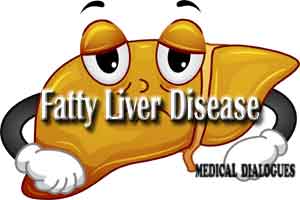- Home
- Editorial
- News
- Practice Guidelines
- Anesthesiology Guidelines
- Cancer Guidelines
- Cardiac Sciences Guidelines
- Critical Care Guidelines
- Dentistry Guidelines
- Dermatology Guidelines
- Diabetes and Endo Guidelines
- Diagnostics Guidelines
- ENT Guidelines
- Featured Practice Guidelines
- Gastroenterology Guidelines
- Geriatrics Guidelines
- Medicine Guidelines
- Nephrology Guidelines
- Neurosciences Guidelines
- Obs and Gynae Guidelines
- Ophthalmology Guidelines
- Orthopaedics Guidelines
- Paediatrics Guidelines
- Psychiatry Guidelines
- Pulmonology Guidelines
- Radiology Guidelines
- Surgery Guidelines
- Urology Guidelines
Higher intake of meat tied to higher risk of fatty liver disease

It is thought that meat is an essential component of diet as it is a rich source of protein but it has an inherent shortcoming. People who eat a lot of animal protein may be more likely to have excessive fat in their livers and a higher risk of liver disease than individuals whose main source of protein is vegetables. The Dutch study has appeared in the Journal Hepatology.
A healthy lifestyle is a first-line treatment in non-alcoholic fatty liver disease (NAFLD), but specific dietary recommendations are lacking. While dietary changes are recommended to treat this type of liver disease, research to date hasn’t clearly demonstrated whether these changes can work for prevention.
The researchers examined data from dietary questionnaires and liver fat scans for 3,882 adults who were 70 years old on average. Scans showed 1,337 participants, or 34 per cent had NAFLD, including 132 individuals who were a healthy weight and 1,205 who were overweight.
Overweight people who ate the most animal protein were 54 per cent more likely to have fatty liver than individuals who consumed less meat, the analysis found.
“Perhaps most importantly, the association was independent of total caloric intake,” Murad said by email. “We also showed that a diverse diet is important.”
Study participants without fatty liver consumed an average of 2,052 calories a day, compared with 1,996 calories per day on average for people with fatty liver, researchers report in Gut.
People with fatty liver also got more of their total calories from protein: 16 per cent compared with 15.4 per cent without the liver condition. Vegetable consumption was similar for both groups; meats accounted for the difference in protein consumption.
Most people have a little bit of fat in their liver. Fatty liver disease can occur when more than 5 per cent of the liver by weight is made up of fat. Excessive drinking can damage the liver and cause fat to accumulate, a condition is known as alcoholic fatty liver, but even when people don’t drink much, they can still develop non-alcoholic fatty liver disease.
The study wasn’t a controlled experiment designed to prove whether or how diet changes might impact the risk of developing fatty liver. Researchers also relied on questionnaires to assess participants’ diets and calorie intake, which can be unreliable, and they lacked data on non-dietary causes of liver fat accumulation including certain medications and viral infections.
Even so, the findings add to the evidence suggesting that healthy eating habits can minimize the risk of fatty liver disease, even when people have a genetic risk for this condition, said Shira Zelber-Sagi, a researcher at the University of Haifa in Israel who wasn’t involved in the study.
“Meat contains saturated fat, especially red meat, which induces fatty liver,” Zelber-Sagi said by email.
Processed meat is particularly unhealthy because it can contribute to inflammation and so-called insulin resistance, or an inability to respond normally to the hormone insulin that can lead to elevated blood sugar levels and diabetes, Zelber-Sagi added. Both inflammation and insulin resistance can lead to fat accumulation in the liver.
The current study results add to the evidence suggesting that people should limit red and processed meat and try to eat more fish and follow a Mediterranean diet, Zelber-Sagi added. A Mediterranean diet is rich in whole grains, fish, lean protein, veggies and olive oil.
At most, people should eat red meat no more than once or twice a week, Zelber-Sagi advised. Processed meat should be avoided or consumed only rarely.
For further reference log on to : http://dx.doi.org/10.1136/gutjnl-2017-315940

Disclaimer: This site is primarily intended for healthcare professionals. Any content/information on this website does not replace the advice of medical and/or health professionals and should not be construed as medical/diagnostic advice/endorsement or prescription. Use of this site is subject to our terms of use, privacy policy, advertisement policy. © 2020 Minerva Medical Treatment Pvt Ltd